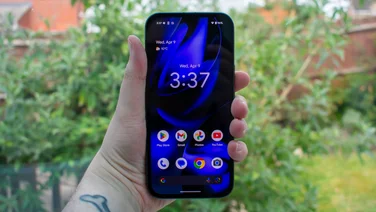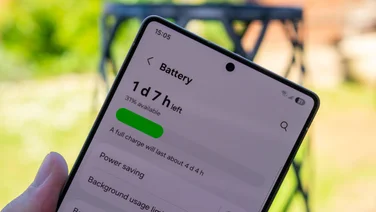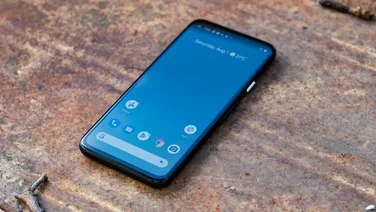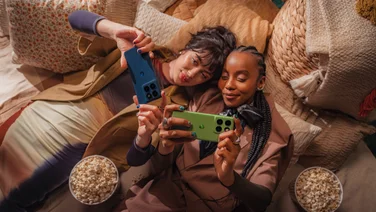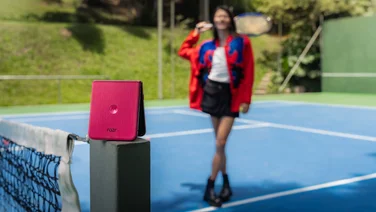To help us provide you with free impartial advice, we may earn a commission if you buy through links on our site. Learn more




































- Astonishing camera offering
- Colour-accurate 4K display
- 21:9 aspect ratio is a delight
- Very, very expensive
- 120Hz only available at FHD resolution
- Poor battery life
Save HUNDREDS on the Sony Xperia 1 III
We loved a lot of things about the Sony Xperia 1 III, but the exorbitant price really put a damper on things. Now, however, you can pick one up at an amazing discount. Usually averaging around £1,050 in price on Amazon, the Xperia 1 III is now down to just £699 in its deep purple colourway – saving you a massive £350.
£699
Amazon
Sonys inability to come up with a proper naming structure for its latest phones might still feel a bit out of place, but theres no denying that its triple-threat Xperia lineup made an impact last year. The Xperia 1 II flagship was a particular highlight, albeit a rather expensive one, and its about to be replaced by the Xperia 1 III.
In truth, there isnt a huge amount that separates the two. The new phone is even more expensive than the original and Sony hasnt exactly ripped it up when it comes to upgrades, either. However, Sonys strategy of refinement over revolution isnt necessarily to the Xperia 1 IIIs detriment.
Sony Xperia 1 III review: What you need to know
So what are those differences? At first glance, its hard to tell. Sonys newest four-figured flagship incorporates the same long-tall design as the Xperia 1 II, with a lavish 6.5in 4K OLED screen and a similar Zeiss-branded 12MP triple-camera.
As you might have guessed, the biggest changes are to be found on the inside. Qualcomms most up-to-date flagship mobile chipset, the Snapdragon 888, powers the Xperia 1 III, and it promises higher levels of sustained performance and power efficiency over last years version.




































This new processor works in tandem with an extra 4GB of RAM (now totalling 12GB), and the Xperia 1 III has a slightly larger, 4,500mAh-capacity battery as well. Other changes include a maximum screen refresh of 120Hz (up from 60Hz) and reverse wireless charging support. The phone comes with Android 11, too.
Sony Xperia 1 III review: Price and competition
Sadly, youre going to have to pay a lot of money for all this. Launching in August 2021, the Xperia 1 III costs £1,200, which is £100 more expensive than last years model. Theres no word yet on how much a monthly contract will set you back, but you can expect it to be just as painfully pricey.
Its a shame Sony is continuing to flog its flagship phones at such laughably absurd prices. As an alarming point of comparison, the Xperia 1 III costs £200 more than the ever-popular iPhone 12 Pro and its £100 more expensive than the base iPhone 12 Pro Max as well. Bonkers.
As far as Android phones go, Samsungs Galaxy S21 Ultra is our choice at the premium end of the market but, like the iPhone, its also a heck of a lot cheaper than this Sony. In fact, it can now be found for around £900.




































And its also worth mentioning that there are a couple of cheaper Xperia handsets that have either just arrived or are about to. Sonys mid-ranger, the Xperia 10 III, is a respectable alternative at just £399, and sitting between the two (but closer in price to the Xperia 1 III) is the Xperia 5 III, which youll soon find in shops for £900.
READ NEXT: Our pick of the best smartphones
Sony Xperia 1 III review: Cameras
With the Xperia 1 IIIs exorbitant launch price swiftly pushed out of the way, Im going to deviate from our usual phone reviews structure and discuss what makes the Xperia 1 III so great from the get-go.
After spending a couple of weeks with Sonys newest flagship, theres absolutely no denying the Xperia 1 III offers one of the most comprehensive and well-thought-out camera offerings Ive ever experienced on a smartphone.
The rear camera array is arranged in a vertical traffic light formation, which incorporates a trio of 12MP lenses, all at different focal lengths. Sitting at the top is an ultra-wide unit, which has an equivalent focal length of 16mm. The main sensor, placed in the centre, is optically stabilised and has a focal length of 24mm and an f/1.7 aperture.




































The most exciting thing about this phone, however, is the third camera: a 12MP telephoto lens thats capable of switching between 70mm and 105mm focal lengths at the push of a button. Offering an equivalent optical zoom range of 2.9x and 4.4x, this Variable Optical Zoom system, as Sony calls it, is achieved through the use of a movable lens element thats placed on top of the cameras 1/2.9in sensor.
READ NEXT: Best phone camera
What this means is that Sony is able to offer two optical zoom ranges in a single camera module, functioning sort of like a teleconverter on a traditional camera lens. Its a bit of a technical achievement and theres no denying the boffins at Sony have cooked up something unique here.
How did I get on with this intriguing camera setup in testing, then? During a misty walk in Ditchling Beacon in the South Downs, I captured some truly exceptional landscape shots overflowing with intricate details, including wispy cloud layers and leaf-packed tree foliage.

However, I was most impressed by the Xperia 1 IIIs ability to render colours almost exactly as you see them, capturing subdued and delicately neutral colours every time you press the shutter button.
As with its predecessor, the Sony Xperia 1 III also has real-time eye autofocus for both humans and animals and up to 20fps burst-mode focus tracking as well. Using this method, I snapped some truly impressive pictures of Daisy, our Senior Editor Ed Munns unstoppably energetic Jack Russell, as well as a couple of inquisitive geese cooling off in Poplar Dock Marina on a sunny evening. Take a look at the quality of the reflections in this gooses eye:

The Xperia 1 IIIs portrait pictures looked equally terrific. Theres no dedicated portrait mode for the rear cameras (only the 8MP selfie camera gets one of those), but you are able to apply and adjust the bokeh before you capture an image. Outlines around the subject are nice and crisp, and facial details look absolutely spot on as well.

Whats even more impressive is that capturing pictures of this calibre is pretty much effortless. Most of the image samples dotted around this review were taken using the phones basic shooting mode in the Photography Pro camera app. Outside the portraits I didnt need to tinker with any of the various settings beforehand.
Should you need it, however, the Sony Xperia 1 IIIs camera app is filled with a wide range of features and settings, with a similar UI and settings to Sonys mirrorless and full-frame Alpha cameras.
My only real complaint is that there is a slight amount of micro-blurring when taking pictures using the phones zoom lens, although this is only really noticeable in extremely sunny environments if you crop into the image afterwards.
As for video capture, the Xperia 1 III can record at up to 4K resolution at a variety of frame rates, including 24, 30 and 60fps, with the option for 120fps slow-mo shooting at 4K with EIS engaged as well. Video is mostly crisp and judder-free, even during rapid camera panning.
Sony Xperia 1 III review: Design and key features
Thats an awful lot to take in, but its time to move on to the rest of the Xperia 1 IIIs characteristics. This is yet another of Sonys long and thin flagships. Its screen has an aspect ratio of 21:9 and this means that, while its total height is about the same as the plus-sized Galaxy Note 20 Ultra (165mm), its nowhere near as wide, measuring just 71mm across.
If you wear jeans with small pockets, you might find that the Xperia 1 III pops awkwardly out of the top. Otherwise, it fits nicely in the hand and I didnt have any issues reaching across the screen with my thumb when using the phone one-handed, either.




































Sonys floating Side Sense dock further assists one-handed use. Simply double-tap the highlighted area of the screen and you can access a list of your most-used apps, as well as enable the phones one-handed and multi-window modes.
Design-wise, the Xperia 1 III is pretty much a carbon copy of last years version, but thats no bad thing. The Frosted Black model I received for review befittingly fits its premium price: it looks good, feels good, and the new matte finish isnt a fingerprint magnet, either.
A thumbprint sensor is helpfully embedded in the phones power button on the right edge of the phone, and the dedicated camera shutter button, which can be half-pressed to focus, is also a nice addition. Its a bit of a throwback to use a phone that doesnt have a pesky holepunch notch eating its way into the screen, too the selfie camera is instead located within a slim bezel at the top of the display.




































Another rarity is that the Xperia 1 III includes a 3.5mm audio jack. According to Sony, the Dolby Atmos-tuned full stage stereo speakers are also 40% louder than last years, and they support Sonys 360 Reality Audio format, too.
Sony Xperia 1 III review: Display
Sony remains the only smartphone maker to include a 4K resolution display on its flagship phones. Potential power drain aside, the Xperia 1 IIIs 6.5in OLED screen is as good as it gets, with 10-bit colours, support for HDR 10 content, and a maximum resolution of 1,644 x 3,840 with a super-high pixel density of 643ppi.
I use the word maximum here because, depending on the settings you choose, the phone wont always display a native 4K image. In fact, if you want to deploy the Xperia 1 IIIs new 120Hz refresh mode, it automatically drops to FHD+ resolution. I expect this is some sort of battery-saving measure, but the Galaxy S21 Ultra doesnt need to do this to run the display at 120Hz and it doesnt cause too many issues, either.




































I have very few complaints about the quality of the screen. Colour reproduction is absolutely spot on, with a measured average Delta E colour variance of 1.15 in the phones Creator display mode, which targets the BT.2020 colour gamut. Even the most exacting of eyeballs wont be able to spot any inaccuracies.
The only small negative is that the Xperia 1 IIIs display isnt particularly bright. With a measured peak luminance of 450cd/m² in HDR video, the Xperia 1 III isnt the best for watching HDR movies or TV. As a point of reference, the iPhone 12 Pro, which also has an AMOLED display, is capable of reaching HDR brightness levels of well over 1,000cd/m².
Sony Xperia 1 III review: Performance and battery life
Take a peek inside, and youll find Qualcomms latest flagship mobile processor, the Snapdragon 888. This 5G-enabled chipset is clocked at a speedy 2.84GHz and it works side by side with a frankly ludicrous 12GB of RAM. This much memory is mostly overkill for any smartphone user, however, despite what Sony might say.
READ NEXT: Best phone battery life
Theres not much that differentiates the Xperia 1 III from the rest of the competition, either. As the Geekbench 5 graph below shows, its clearly as rapid as it gets but, as usual, its much of a muchness compared with other top-end phones. It is, however, a solid advance over last years Xperia 1 II.

As for games, the Xperia 1 III edges slightly ahead of the competition. With the 120Hz refresh setting enabled (and, therefore, with FHD+ resolution enabled), the Xperia 1 III reached an average frame rate of 116fps in the onscreen GFXBench Manhattan 3 test, outperforming the Galaxy S21 Ultra by some distance. The caveat here, of course, is that the Samsung was tested at its native QHD+ resolution and not FHD+ like the Sony.

Unfortunately, the Xperia 1 IIIs larger 4,500mAh battery hasnt done much to improve the Xperia 1 IIs woeful battery life. Surviving for a total of 14hrs 43mins in our battery rundown test, the Xperia 1 IIIs stamina is weak compared with its main rivals, with both the Galaxy S21 Ultra and Pixel 5 outlasting Sonys battery-hungry flagship by more than eight hours.

Sony Xperia 1 III review Verdict
The Sony Xperia 1 IIIs poor stamina is hugely disappointing because its otherwise a truly exceptional handset. Mostly unblemished in every other area, and truly exceptional in others, the Xperia 1 III is a solid indication that Sony absolutely knows what its doing in the mobile space.
All Sony needs to do now is swallow its pride, ask for less than what Samsung and Apple are currently charging and ditch the pointless 4K display in favour of better battery life. If they can do those things, theres nothing standing in the way of its phones standing side by side with the best phones around.
For the time being, however, the Sony Xperia 1 III is simply too expensive, and battery life is too short-lived, to recommend.
| Sony Xperia 1 III specifications | |
|---|---|
| Processor | Octa-core Qualcomm Snapdragon 888 (1×2.84GHz, 3×2.42GHz, 4×1.8GHz) |
| RAM | 12GB |
| Screen size | 6.5in |
| Screen resolution | 3,840 x ,1644 |
| Pixel density | 643ppi |
| Screen type | OLED |
| Screen refresh rate | 120Hz (FHD) |
| Front camera | 8MP (f/2) |
| Rear camera | 12MP (f/1.7), 12MP (f/2.3) zoom, 12MP (f/2.2) wide, 0.3MP depth |
| Flash | LED |
| Dust and water resistance | IP65/68 |
| 3.5mm headphone jack | Yes |
| Wireless charging | Yes |
| USB connection type | USB-C |
| Storage options | 256GB; 512GB |
| Memory card slot (supplied) | microSD |
| Wi-Fi | Wi-Fi 6 |
| Bluetooth | 5.2 |
| NFC | Yes |
| Cellular data | 5G, 4G |
| Dual SIM | Yes (shared with microSD) |
| Dimensions (WDH) | 165 x 71 x 8.2 mm |
| Weight | 186g |
| Operating system | Android 11 |
| Battery size | 4,500mAh |


